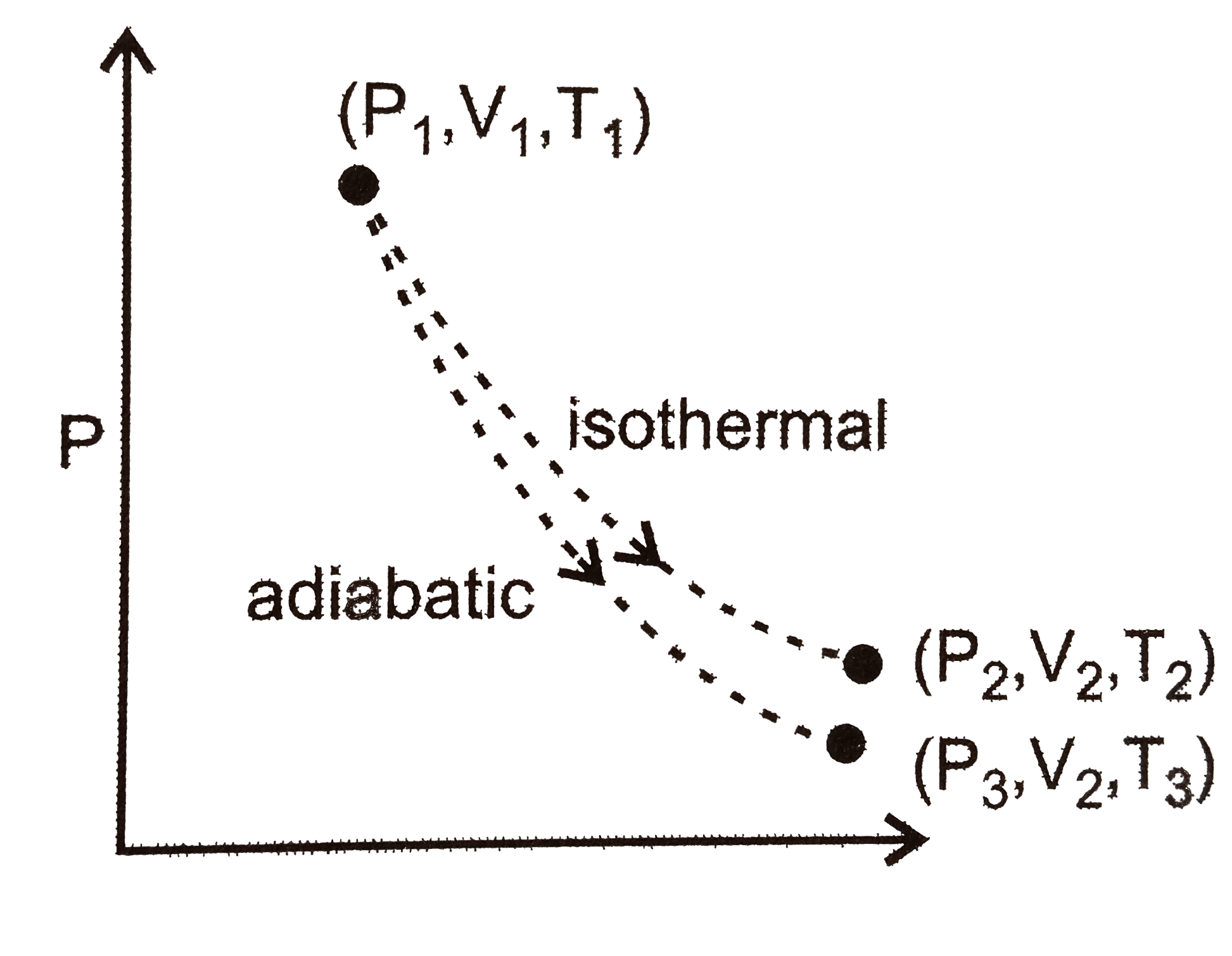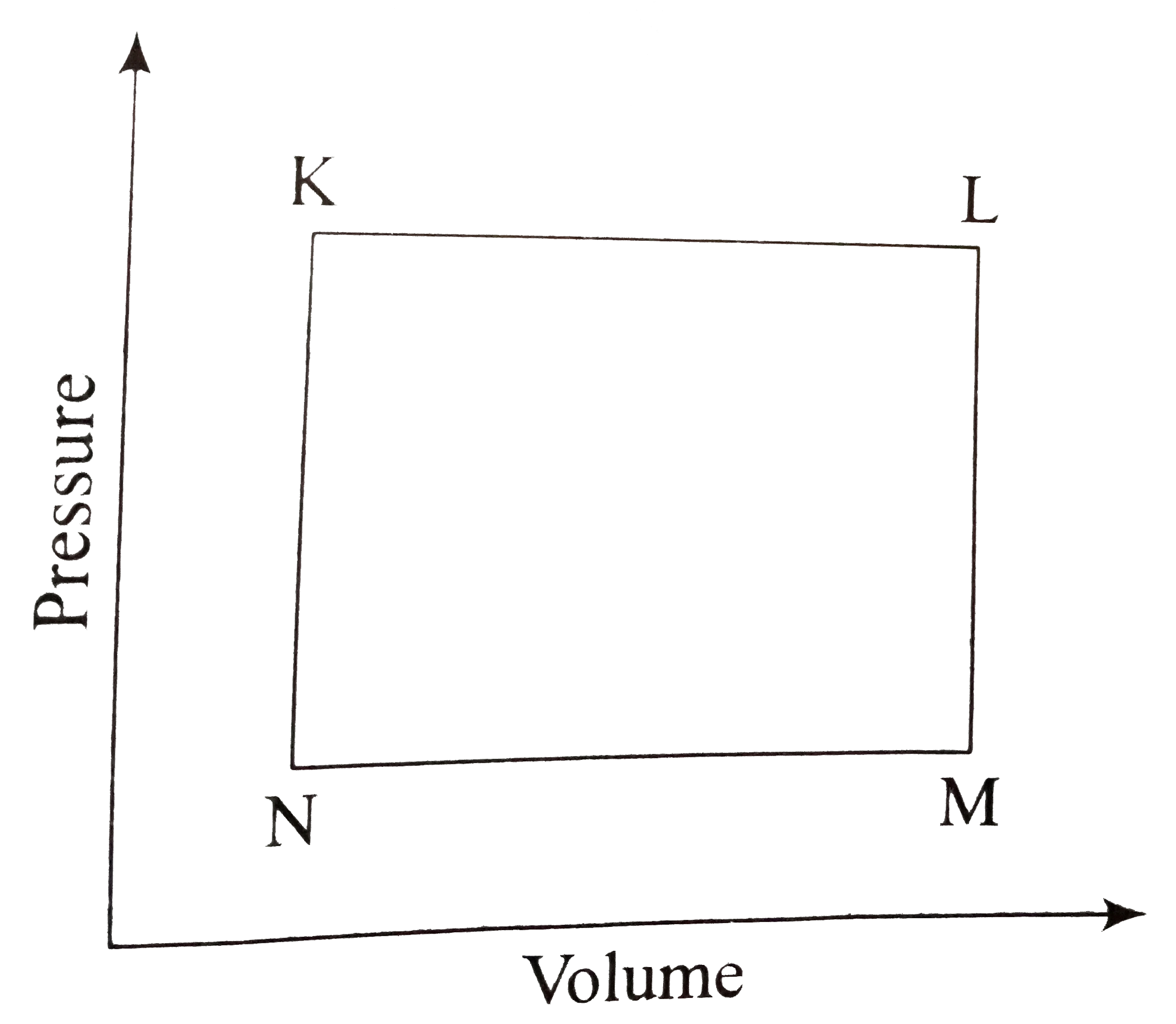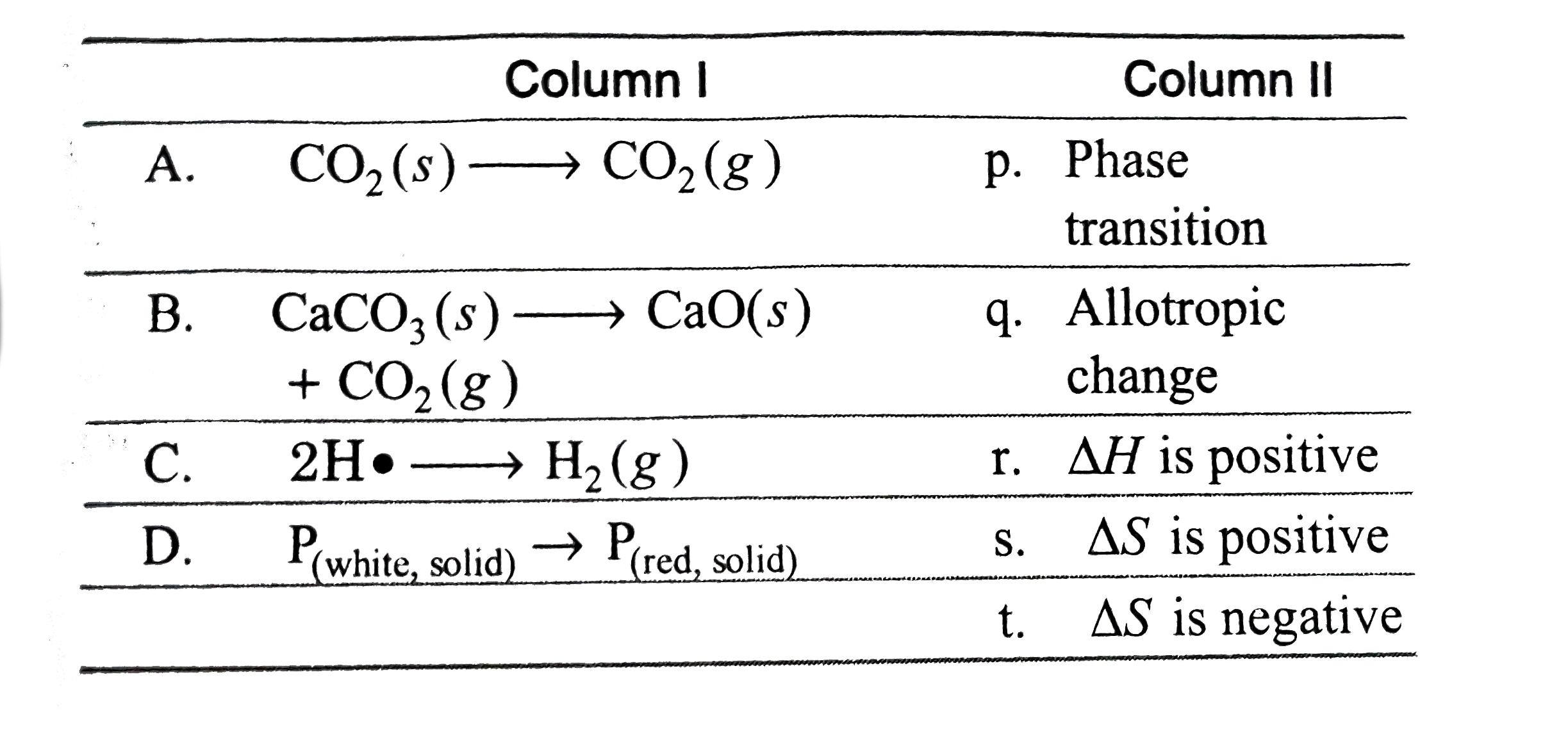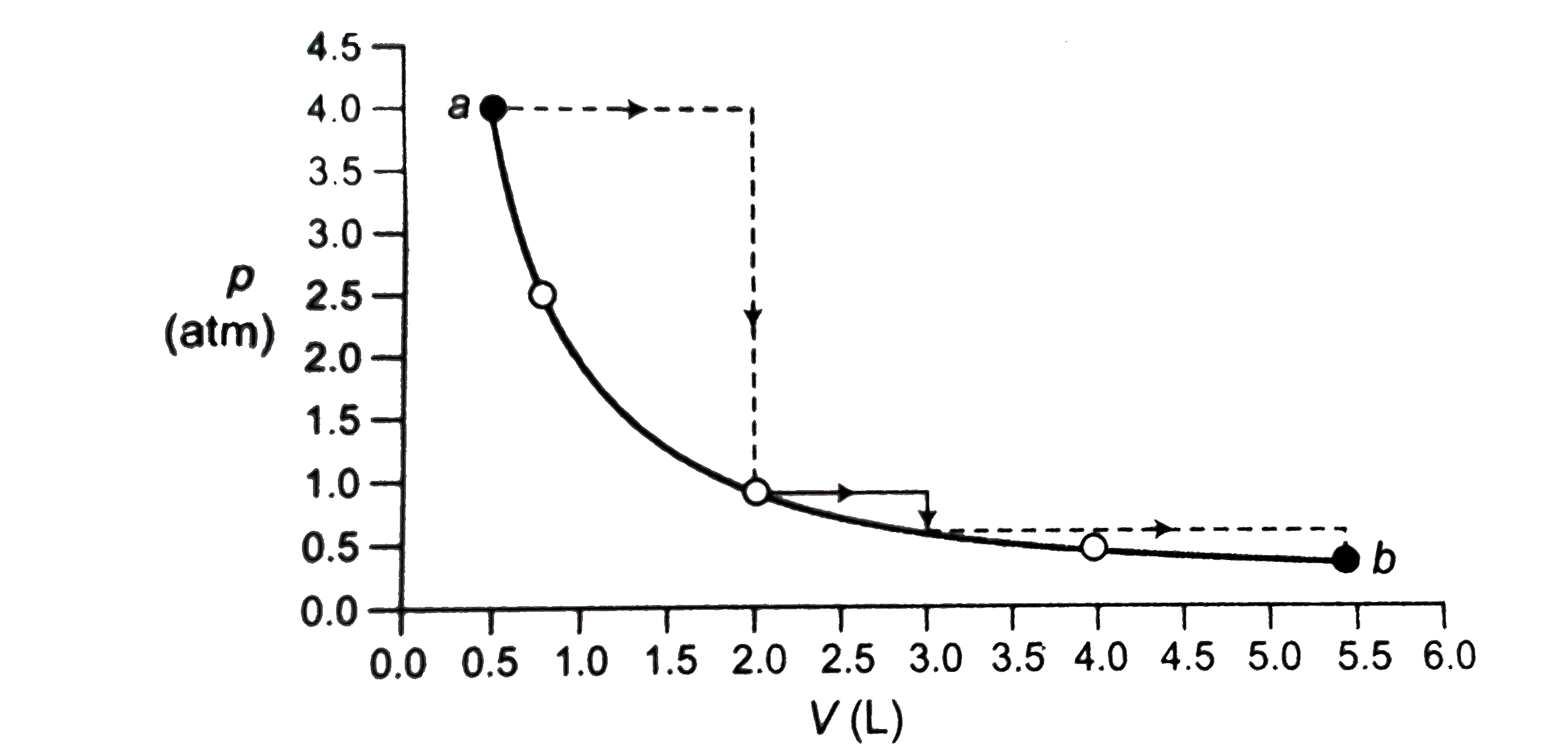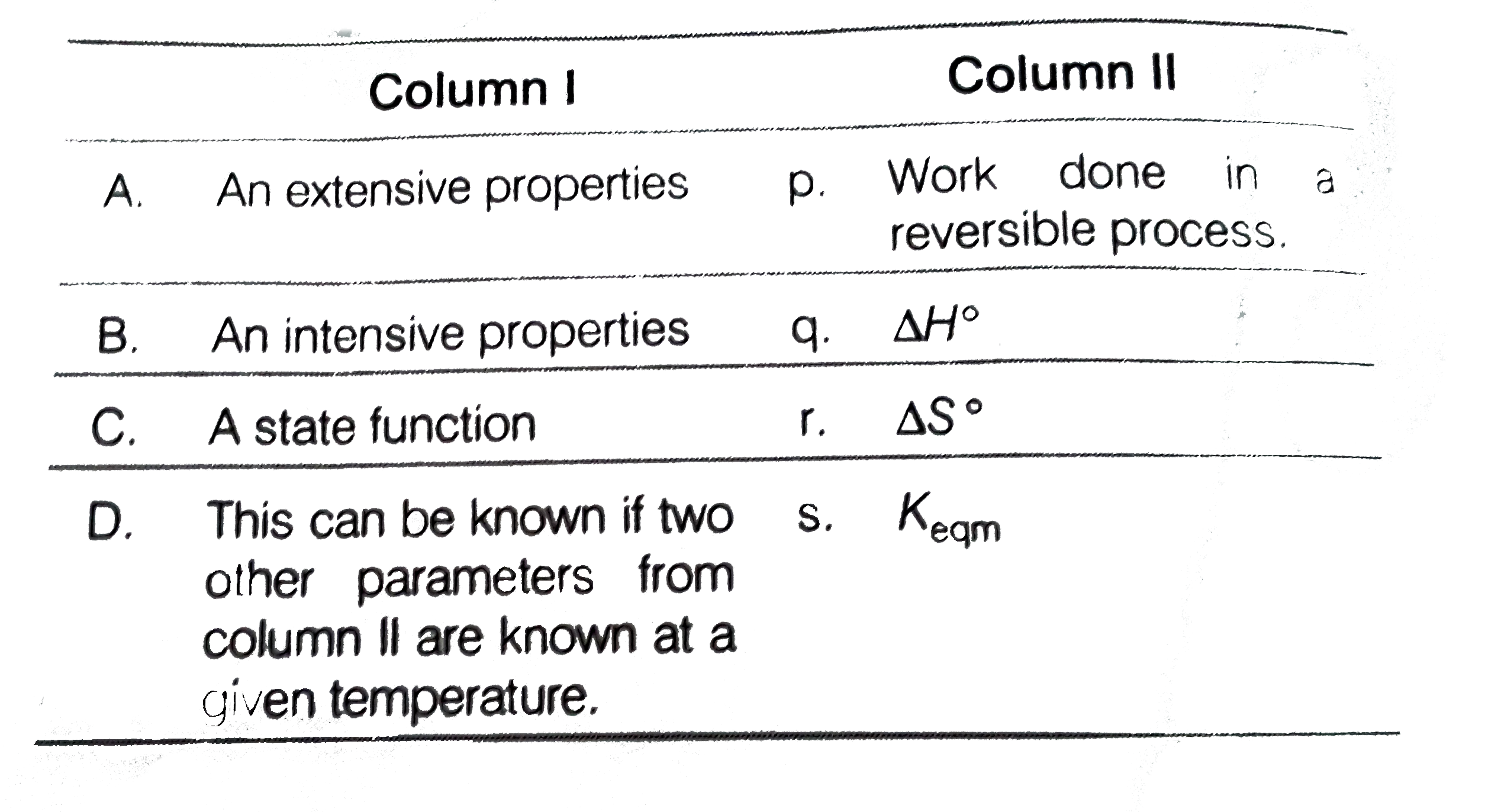All Questions from IIT-JEE PREVIOUS YEAR (CHEMISTRY) THERMODYNAMICS AND THERMOCHEMISTRY for Class 12
| Class 12 | CHEMISTRY |
| Chapter | THERMODYNAMICS AND THERMOCHEMISTRY |
| IIT-JEE PREVIOUS YEAR (CHEMISTRY) | All Questions |
| Medium | English |
| Academic Year | 2023-2024 |
Question 2
The standard state Gibba free energies of formations of C("graphite") and ("diamond") at T =298k are
ΔfG∘[C(graphite)= O kJmol−1
ΔfG∘[C(graphite)= O kJmol6−1
The standed state means that the presses should be 1 bar, and substance of graphite [C(graphite)] to diamond [C(diamond )] reduces its volume by 2×1010m−1 If C(graphite) is converted to C(diamond ) isothemally at T= 298k the pressure at which C( graphite) is in equilibrium with C(diamond) ,is
[ useful infromation : 1J−Kgm2s−2
1pa=1kgm−1s−2:1−=105pa]View SolutionQuestion 21
An ideal gas in thermally insulated vessel at internal (pressure)=P1,(volume)=V1 and absolute temperature=T1 expands irreversiby against zero external, pressure , as shown in the diagram,
The final internal pressure, volume and absolute temperature of the gas are p2,V2andT2, respectively . For this expansion
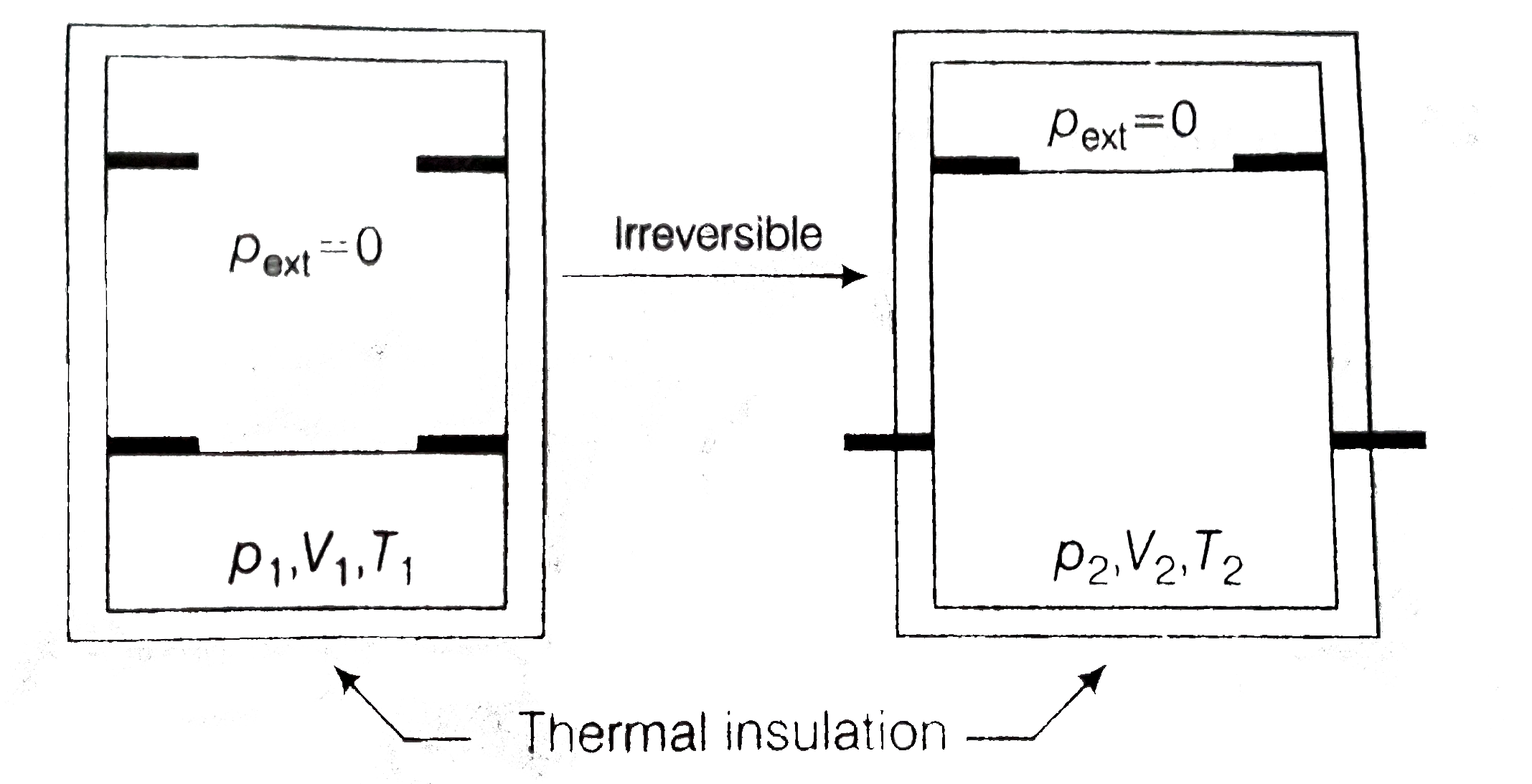 View Solution
View SolutionQuestion 24
For an ideal gas, consider only P−V work in going from an initial state X to the final state Z. The final state Z can be reached by either of the two paths shown in the figure. Which of the following choice(s) is (are) correct? [Take ΔS as change in entropy and w as work done]
 View Solution
View SolutionQuestion 44
For the reaction
2CO+O2→2CO2,ΔH=−560kJ,
2mol of CO and 1mol of O2 are taken in a container of volume 1L. They completely form 2mol of CO2. The gaseous deviate appreciably from ideal behaviour. If the pressure in the vessel changes from 70 to 40atm, find the magnetic (absolute) value of ΔUat500K.(1L−atm=0.1kJ)View SolutionQuestion 47
Two moles of a perfect gas undergo the following process: (a) A reversible isobaric expansion from (1.0 atm, 20.0 litre) to (1.0 atm,40.0litre). (b) A reversible isochoric change of state from (1.0 atm, 40.0 litre) to (1.0 atm, 40.0 litre). (b) A reversible isochoric change of state from (1.0 atm, 40.0 litre) to (0.5 atm, 40.0 litre). (c) A reversible isothermal compression from (0.5atm, 40.0 litre) to (1.0 atm, 20.0 litre). (i) Sketch with labels each of the process on the same P−V diagram. (ii) Calculate the total work (W) and the total heat change (q) involved in the above process. (iii) What will be the value of ΔU,ΔH and ΔS for the overall process?View SolutionQuestion 48
When 1pentyne (A) is treated with 4N alcoholic KOH at 175∘C, it is slowly converted into an equilibrium mixture of 1.3% of 1pentyne (A),95.2%2-pentyne (B) and 3.5% of 1,2-pentandiene (C). The equilibrium was maintained at 175∘C. calculate ΔGΘ for the following equilibria:
B⇔A,ΔGΘ=1?
B⇔C,ΔGΘ=2?
From the calculated value of ΔGΘ1and ΔGΘ2, indicate the order of stability of A,B and C. View SolutionQuestion 52
An athelete is given 100g of glucose (C6H12O6) of energy equivalent to 1560kJ. He utilises 50% of this gained enegry in the event. In order to avoid storage of enegry in the body, calculate the weight of water he would need to perspire. The enthalpy of evaporation of water is 441kJ/mol. View SolutionQuestion 54
With the help of thermochemical equations given below, determine ΔrHΘ at 298K for the following reaction:
C(graphite)+2H2(g)→CH4(g),ΔrHΘ=?
C(graphite)+O2(g)→CO2(g),<br>ΔrHΘ=−393.5kJmol−1 ...(1)
H2(g)+1/2O2(g)→H2O(l),
ΔrHΘ=−285.8kJmol−1 ...(2)
CO2(2)(g)+2H2O(l)→CH4(g)+2O2(g),
ΔrHΘ=+890.3kJmol−1 ...(3)View SolutionQuestion 65
In a constant volume calorimeter, 3.5g of a gas with molecular weight 28 was burnt in excess oxygen at 298.0K. The temperature of the calorimeter was found to increase from 298.0K→298.45K due to the combustion process. Given that the heat capacity of the calorimeter is 2.5kJK−1, find the numerical value for the enthalpy of combustion of the gas in kJmol−1View SolutionQuestion 68
From the following data, calculate the enthalpy change for the combustion of cyclopropane at 298K. The enthalpy of formation of CO2(g),H2O(l) and Propene(g) are −393,−285.8 and 20.42kJmol−1 respectively. The enthalpy of isomerisation of cyclopropane to propene is −33.0kJmol−1View SolutionQuestion 69
Compute the heat of formation of liquie methyl alcohol is kilojoule per mol using the following data. Heat of vaporisation of liquid methyl alcohol =38kJ/mol. Heat of formation of gaseous atoms from the elements in their standard states :H=218kJ/mol,C=715kJ/mol,O=249kJ/mol.
Average bond energies:
C−H415kJ/mol,C−O356kJ/mol,O−H463kJ/mol. View SolutionQuestion 70
The standard molar enthalpies of formation of cyclohexane (l) and benzene (l) at 25∘C are −156 and +49kJmol−1, respectively. The standard enthaly of hydrogenation of cyclohenxene (l) at 25∘C is −119kJmol−1 Use this data to estimate the magnitude of the resonance enegry of benzene. View SolutionQuestion 71
The polymerisation of ethylene to linear polyethylene is represented by the reaction
nCH2=CH2→(−CH2−CH2−)n
When n has a large integral value. Given theat the average enthalpies of bond dissociation for C=C and C−C at 298Kare +590 and +331kJmol−1 respectively, calculate the enthalpy of polymerisation per mole of ethylene at 298K. View SolutionQuestion 72
In order to get maximum calorific output a burner should have an optimum fuel to oxygen ratio which corresponds to three times as much oxygen as is required theorectically for complete combusion of the fuel A burner which has been adjused for methane as fuel (with xLh−1 of CH4 and 6xLh−1ofCO2) is to be readjusted for butane C4H10 in order to get the same calorific output what should be the rate of supply to butane and oxygen? Assume that losses due to incomplete combustion etc are the same for both fuels and that the gases behave ideally Heats of combusion
CH4=809kJmol−1,C4H10=2878kJmol−1 .View SolutionQuestion 76
An intimate mixture of ferric oxide and aluminium is used as solid fuel in rockets. Calculate the fuel value per cm3 of the mixture.
Heats of formation and densities are as follows:
HΘf(AI2O3)=−399kcalmol−1,HΘf(Fe2O3)=−199kcalmol−1
Density of Fe2O3=4.0gcm−3, Density of Al=2.0gcm−3 View SolutionQuestion 79
Given the following standard heats of reactions:
(a) heat of formation of water =−68.3kcal, (b) heat of combustion of C2H2=−310.6kcal, (c ) heat of combustion of ethylene =−337.2kcal. Calculate the heat of reaction for the hydrogenation of acetylene at constant volume and at 25∘C. View SolutionQuestion 87
When the system is retuned form state B to A along the curved path, the work doen on the system is 20 J Does the system absorb ro liberate heat, and how much?
When a system is taken from state A to state B along the parth ACB in the figure below ,80 j of heat flows into the system and the system does 30 J of work.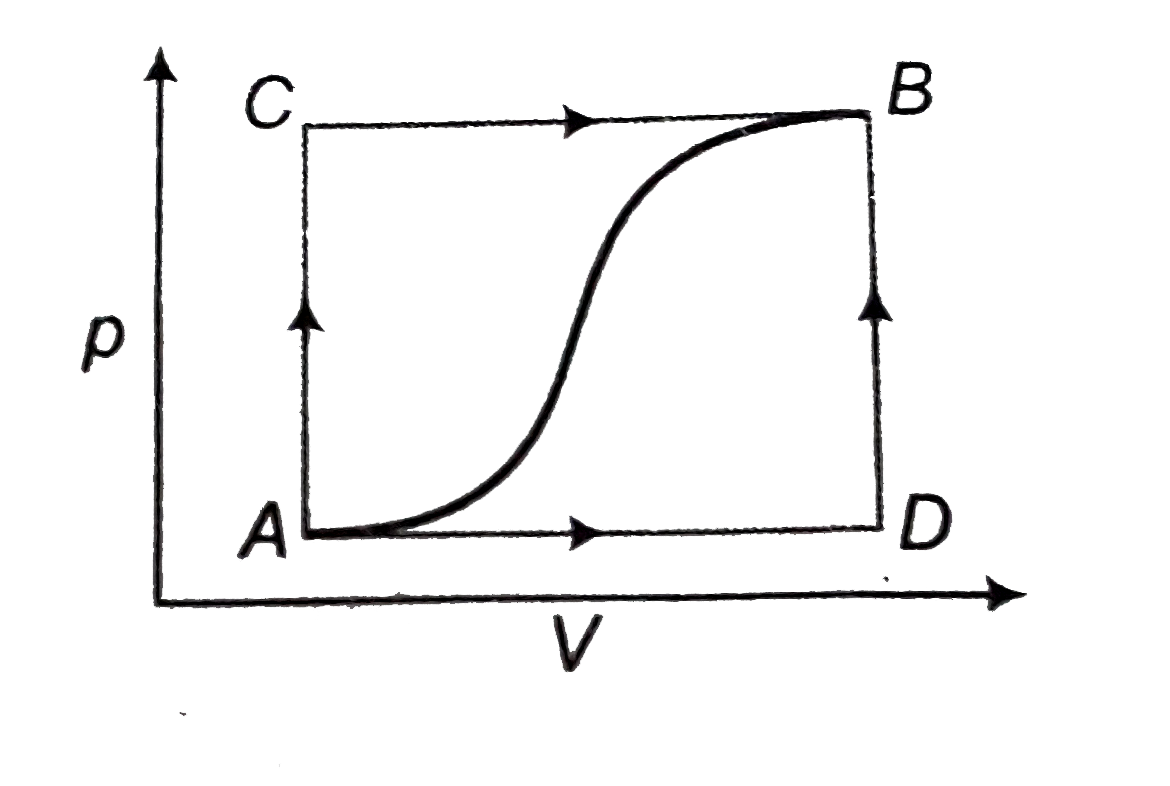 View Solution
View Solution
